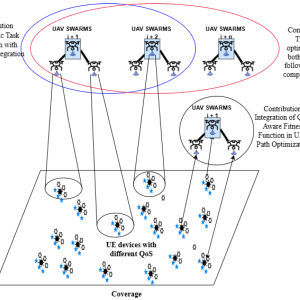Advancing Unifly’s UTM (Unmanned Traffic Management) Cybersecurity Model successfully concluded in collaboration with the Federal Aviation Administration (FAA) and key industry stakeholders. This monumental achievement marks a significant leap forward in the realm of drone technology, underscoring Unifly’s commitment to bolstering the security and efficiency of UTM systems.

Unveiling the Collaborative Triumph
Background
The collaborative venture, initiated by Unifly, epitomizes the convergence of technological innovation and regulatory prowess. This partnership with the FAA, a pivotal player in shaping aviation standards, underscores the commitment to not just meeting but exceeding the cybersecurity benchmarks set for UTM systems.
Project Scope
The scope of the cybersecurity model project encompassed a comprehensive analysis of potential vulnerabilities within UTM frameworks. By leveraging insights from industry stakeholders, Unifly embarked on a meticulous journey to fortify the very backbone of drone operations – ensuring a resilient and secure UTM ecosystem.
Key Milestones Achieved
1. Thorough Risk Assessment
Unifly spearheaded an exhaustive risk assessment, leaving no stone unturned in identifying and addressing potential vulnerabilities. This thorough examination laid the groundwork for developing a robust cybersecurity model that serves as a shield against evolving threats.
2. Strategic Collaboration with FAA
The collaboration with the FAA played a pivotal role in aligning the cybersecurity model with existing and future aviation regulations. This strategic partnership not only ensured compliance but also positioned the project at the forefront of industry standards.
3. Real-world Testing and Validation
Before the project’s conclusion, Unifly subjected the cybersecurity model to rigorous real-world testing scenarios. This meticulous approach aimed to validate the model’s effectiveness under various conditions, providing empirical evidence of its reliability.
Significance of the Project
Elevating UTM Security Standards
The successful completion of this project signifies a paradigm shift in the approach to UTM security. Unifly, in tandem with the FAA and industry stakeholders, has elevated the standards for safeguarding UTM systems, instilling confidence in the burgeoning drone industry.
Strengthening Public Trust
As drones become increasingly integrated into airspace, public trust becomes a paramount consideration. Unifly’s cybersecurity model not only meets regulatory requirements but goes beyond, fostering a sense of security among both industry players and the general public.
Future Implications
Industry-wide Adoption
With the cybersecurity model now validated and proven, the groundwork is laid for industry-wide adoption. Unifly’s proactive stance in addressing cybersecurity concerns sets a precedent for other UTM providers, fostering a collective commitment to safety and security.
Regulatory Influence
The collaboration with the FAA amplifies the potential regulatory impact of this project. As aviation authorities witness the successful integration of enhanced cybersecurity measures, it is plausible that similar standards will be embraced globally, further solidifying Unifly’s leadership in the UTM landscape.
Conclusion
In conclusion, Unifly’s successful completion of the UTM cybersecurity model project, in partnership with the FAA and industry stakeholders, is a testament to the unwavering commitment to advancing the drone industry responsibly. This collaboration not only strengthens UTM security but also sets a new benchmark for industry-wide cooperation in tackling emerging challenges. As the drone ecosystem continues to evolve, Unifly’s pioneering efforts in cybersecurity will undoubtedly resonate as a beacon of innovation and excellence.










